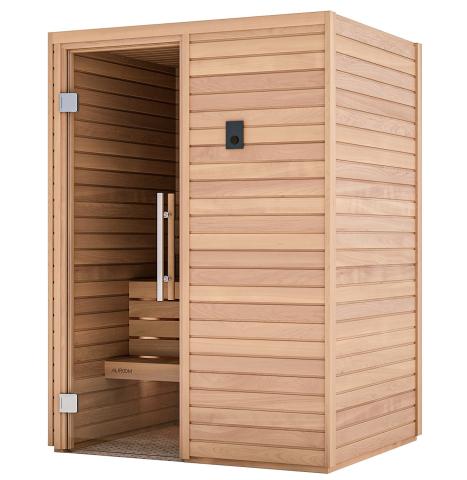Some Known Incorrect Statements About Traditional Sauna
Some Known Incorrect Statements About Traditional Sauna
Blog Article
The Greatest Guide To Traditional Sauna
Table of ContentsTraditional Sauna for BeginnersThe 7-Minute Rule for Traditional SaunaTraditional Sauna Can Be Fun For EveryoneThe smart Trick of Traditional Sauna That Nobody is DiscussingTraditional Sauna Things To Know Before You Buy
A lot of the weight shed in a sauna is water loss and is re-gained upon rehydrating. Without a doubt sauna can be an essential part of a healthy weight loss program. To check out the distinctions in between traditional and IR saunas, I will separate these right into proven, theoretical, and fabricated distinctions.Hence, the best point in the saunawhich is at the ceiling directly above the sauna heateris generally between 185 and 190 F. Claims that a standard sauna goes beyond 200 F is merely not real and not suitable for electrical saunas marketed in the US. The temperature for a far-infrared sauna is usually established in between 120 and 140 F; nonetheless, unlike the traditional sauna, the objective in and IR area is not to accomplish a high temperature.
Since of this, the temperature difference is almost irrelevant, given that profuse sweating causes both sauna kinds, however the technique of heating the body is various. In an IR sauna the bather will feel hot and will sweat a lot, but at a lot lower temperatures. Traditional Sauna. Thus, if the goal is to invest longer amount of times in the sauna, the IR sauna is a great choice

Everything about Traditional Sauna

When the high temperature level is achieved, the aspects cycle on and off to preserve the high temperature level. Traditional Sauna. The majority of typical sauna individuals take pleasure in putting water over the rocks to develop vapor to elevate sauna moisture levels. The advantages of putting water over the rocks include: making the space much more comfy, dampening the nasal flows, and enabling the use of aromatherapy by mixing crucial oils with the water
In a far-infrared sauna, the heat waves penetrate the body to effectively heat the body and raise the body core temperature level. To accomplish this raised temperature level, Far-infrared emitters produce infrared energy which is close to the same wavelength as that which the body normally emitsoften referred to as the "Vital Array" of 7 to 14 microns), so the power is well gotten by the body.
When the energy goes into the body, it causes the body temperature to increase and inevitably results in sweat. In an infrared sauna it is very important for the emitters/heaters to continue to be on virtually frequently. Given that there is no mass of rocks to preserve warmth, the sauna will cool down if the emitters closed off.
What Does Traditional Sauna Do?
As discussed over, the sauna bather in an infrared area intends to position himself before operating emitters to obtain maximum take advantage of the warmth. The home heating time for the two rooms can be extremely different, relying on how the areas are used. For a traditional sauna, a bather needs to enable 30-40 mins for the room to attain a desired temperature and to properly pre-heat the rocks.
A well constructed sauna will normally achieve a temperature level of 150-160 useful reference F in about 30-40 minutes. For hotter temperatures, the space may need to heat for a longer period.

Typical saunas tend to be bigger (hence make use of more electrical power) than infrared saunas, although traditional saunas are absolutely available in one and two individual dimensions. For a two-person standard sauna, 5x6 or 5x7 dimension is most preferred. The top bench can conveniently seat two or three people and is additionally long sufficient to lie down during the sauna session.
The Best Guide To Traditional Sauna
The typical price per kWH of electrical power in the united state is approximately $0.11 - Traditional Sauna, so a 4.5 kW heating unit will cost about $.50 to run for one hour, if the heater runs continually for one hour. Normally a sauna heater will compete 75% of the initial hour and 50% of subsequent hours on given that the aspects cycle once the established temperature level is accomplished
A 2 person far-infrared why not try this out room is typically literally smaller sized than a standard sauna, usually regarding 4' x 4' or smaller sized. The IR heater is generally 1.5-1.7 kW utilizing a 120 volt 15 amp plug-in solution. Considering that the room can be used faster than a sauna space, we will certainly think the room is used for to of an hour including warm up time.
Finally, there is a rarely reviewed distinction in the social experience between the two spaces. While our culture has actually shed several of the social advantage of the traditional sauna experience, it can be really socially gratifying. From household time in the sauna, to heart-felt conversations with better halves, to sauna partiesthe standard sauna experience can bring about intimate interacting socially.
More About Traditional Sauna
Most greater end infrared spaces consist of tinted light therapy, noise systems and full-glass fronts.
Report this page